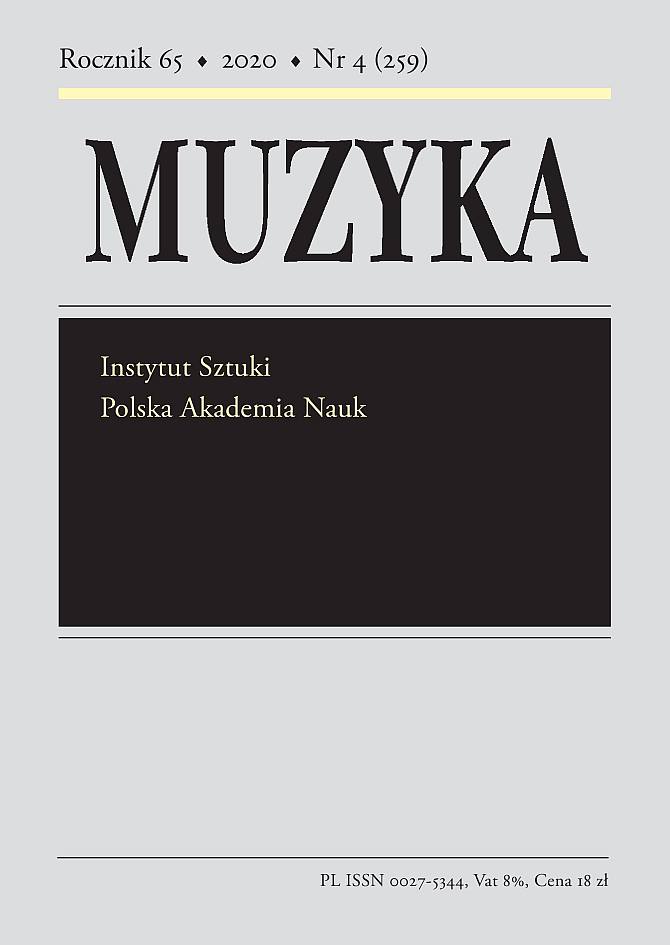Wybrane polskie podręczniki do nauki gry na fortepianie z I poł. XIX w. a perspektywa społecznej historii muzyki
Selected Polish Handbooks of Piano Playing from the First Half of the Nineteenth Century in the Context of the Social History of Music
Author(s): Michał BrulińskiSubject(s): Music
Published by: Instytut Sztuki Polskiej Akademii Nauk
Keywords: handbooks of piano playing; piano schools; piano; pianism;music education; Karol Kurpiński; Ignacy Platon Kozłowski; Franciszek Mirecki; Antoni Sokulski; Jan Nowiński; Ignacy Feliks Dobrzyń;
Summary/Abstract: In this article, I analyse the possibility of using Polish handbooks and schools of piano playing as sources for research into the social history of that instrument, in the strict and the broad sense. The first part of the article consists of a synthesising survey of the rather scant subject literature and an outline of the role of the piano in nineteenth-century Polish culture. I then briefly describe the system of piano teaching in Polish lands during the early decades of the nineteenth century (under the Partitions), which was based on three main pillars: institutional education, private lessons (metra) and handbooks of piano playing.This is followed by an interdisciplinary analysis of selected Polish piano schools from the first half of the nineteenth century (Karol Kurpiński’s Wykład systematyczny zasad muzyki na klawikord (‘A systematic presentation of the principles of music for the clavichord’), 1818; Ignacy Platon Kozłowski’s Szkoła teoretyczna i praktyczna na fortepiano (‘A school of theory and practice for the pianoforte’), 1832; Jan Nowiński’s Nowa szkoła na fortepian (‘A new school for the piano’), 1839; Józef Nowakowski’s Szkoła na fortepian podług celniejszych autorów (‘A school for the piano after the leading authors’), 1840; Ignacy Feliks Dobrzyński’s Szkoła na fortepian poświęcona Rodakom (‘A school for the piano dedicated to my compatriots’), 1842). I focus mainly on the narrative sections of the source materials. This survey made it possible for me to reconstruct the model structure of a piano handbook during the period under discussion. I study this information in the context of our current knowledge about the phenomenon of the piano, as represented in the press, correspondence, memoirs and fiction. I conclude my paper with a few observations concerning the social aspects of the piano in Polish lands during the first half of the nineteenth century and the evolution of those aspects, as well as models of musical education and the external and internal fluctuations of Polish pianism at that time.
Journal: Muzyka
- Issue Year: 65/2020
- Issue No: 4
- Page Range: 40-68
- Page Count: 29
- Language: Polish

